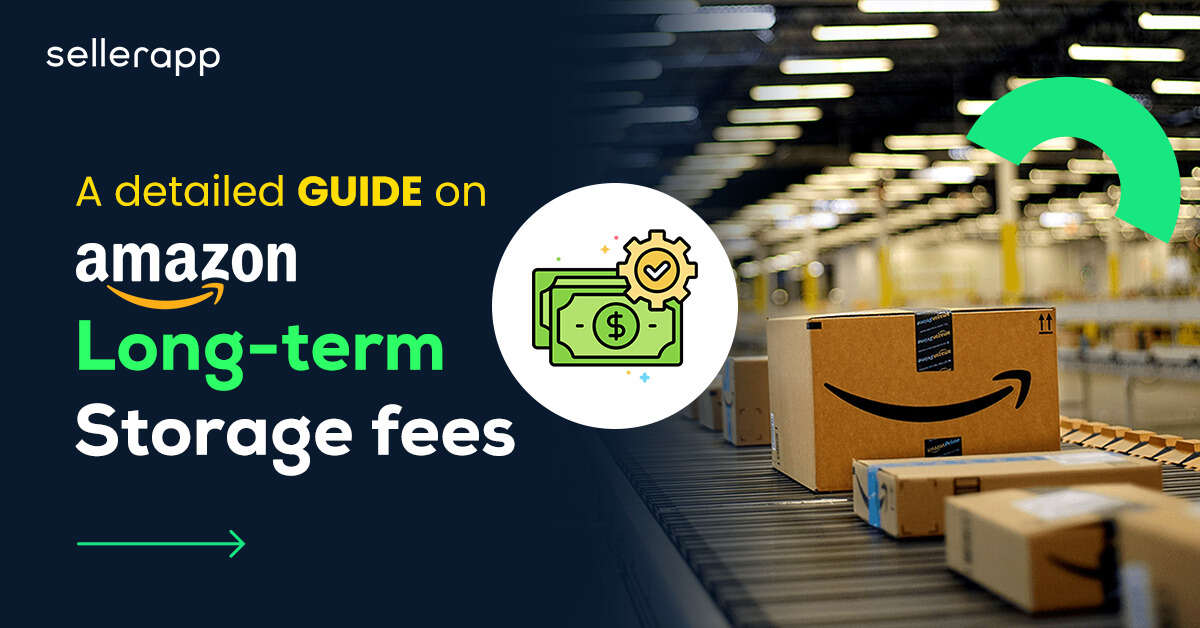Comprehensive Guide to Amazon Seller SKU [+ 5 SKU Generator Tools]
![Comprehensive Guide to Amazon Seller SKU [+ 5 SKU Generator Tools] 1 sku generator for amazon sellers](https://www.sellerapp.com/blog/wp-content/uploads/2023/10/amazon-sku-generator.jpg)
The task of efficiently managing your inventory can often feel like trying to solve a complex puzzle with missing pieces.
With the growth of your product, the need to keep everything organized becomes increasingly daunting.
Ensuring that each product has a unique identifier adds yet another layer of complexity.
The good news is — there’s a solution to the challenges.
The Amazon SKU Generator.
This tool is designed to simplify the entire process of creating and managing SKUs for your products.
In this article, we’ll break down what an Amazon SKU Generator is, why it’s essential, and introduce you to the top 5 tools available to make your e-commerce life easier.
So, let’s dive in.
Quick Guide
- What Is a Stock Keeping Unit (SKU) on Amazon?
- Why Do You Need Amazon SKUs?
- What Is an SKU generator?
- 5 Best Amazon SKU Generators
- Difference Between Amazon Seller SKU, FNSKU, UPC, ASIN, and Barcode
- How To Create an Amazon Seller SKU
- Tips To Remember When Creating Amazon Seller SKU
- Conclusion
What Is a Stock Keeping Unit (SKU) On Amazon?
A Stock Keeping Unit (SKU) is a unique identifier created by sellers and submitted to Amazon to link the product with the corresponding listing on Amazon.
This alphanumeric string helps both sellers and Amazon’s system to manage individual products within their inventory effectively.
The primary function of an SKU is to make inventory management efficient. It allows sellers to keep track of each product they sell on Amazon. For instance, if you are selling multiple products on Amazon, you can assign a unique SKU to each product, making it easier to identify and manage them within your inventory.
Why Do You Need Amazon SKUs?
There are several reasons why Amazon sellers need SKUs:
Data Organization
Having standardized SKUs promotes organized and readable data, especially in Excel spreadsheets and inventory management systems. SKUs enhance efficiency and readability when managing extensive inventory, ensuring data integrity and efficiency
Improved Vendor Communication
SKUs can help to keep your suppliers and vendors in sync. Once both parties have established SKUs for products, conversations become more streamlined and efficient. Emails, messages, and invoices no longer require lengthy product descriptions, saving time and reducing room for miscommunication.
Product Categorization
SKUs assist in categorizing similar products and simplify inventory management. Grouping items based on shared characteristics or categories makes it easier to locate and manage items within the inventory.
Enhanced Warehouse Efficiency
SKUs can help streamline warehouse organization and increase efficiency. Products can be categorized and organized into groups, allowing for quicker and more precise tracking.
Inventory Tracking
SKUs enable careful tracking of inventory levels to ensure products are consistently available in stock.
By utilizing SKUs effectively, sellers can optimize their operations and provide better service to customers.
What Is an SKU generator?
An SKU generator is a helpful tool to automatically generate unique SKU codes for each product in stock. These codes make it easier to track and organize products and simplify the process of adding new items to the system. SKUs can be created based on different criteria like product type, size, color, or manufacturer.
Five Best Amazon SKU Generators
Here is a list of the top 5 free SKU generators that you can use.
Zoho Inventory
Zoho Inventory offers a reliable and free SKU generator for Amazon Sellers. The layout of the tool is user-friendly and straightforward.
![Comprehensive Guide to Amazon Seller SKU [+ 5 SKU Generator Tools] 2 top amazon sku generator software](https://www.sellerapp.com/blog/wp-content/uploads/2023/10/sku-amazon-generator-1100x503.png)
The tool not only makes generating SKUs for your inventory easy, but you can also gain access to efficient stock and sales tracking capabilities.
Key Benefits
- Generates SKUs with consistent format.
- Streamline the SKU generation process without the risk of interruptions.
- User-friendly and easily manageable.
- Simple naming conventions for the generator to prevent confusion.
- Maintains a uniform trend across all SKUs.
Gorgias
![Comprehensive Guide to Amazon Seller SKU [+ 5 SKU Generator Tools] 3 best amazon sku generator software](https://www.sellerapp.com/blog/wp-content/uploads/2023/10/amazon-seller-sku-generator-1100x502.png)
Gorgias offers a free SKU generator that’s hassle-free to use. Simply provide your email to set up your account, and you’re all set. The website’s user-friendly dashboard ensures that anyone, even without SKU expertise, can easily generate SKUs. The tool is also available as a convenient mobile app for on-the-go use.
Key Benefits
- Generates unique codes without unnecessary prefixes.
- Filters out inappropriate details in the codes.
- Avoids the use of special characters and unnecessary spaces.
- Speeds up the SKU generation process.
- Affordable.
- User-friendly and straightforward to operate.
QuickBooks Commerce
This SKU generator stands out due to its unique feature that identifies the most profitable product in your inventory. It simplifies the process of organizing and managing your stock effectively. It also provides insights into your sales performance, helping you identify areas for improvement.
Key Benefits
- Provides insights into your most profitable product.
- Features an attractive and user-friendly layout.
- Simplifies organization of products.
- Streamlines the process of SKU generation.
- Speeds up SKU generation.
Primaseller
![Comprehensive Guide to Amazon Seller SKU [+ 5 SKU Generator Tools] 4 amazon sku generator software](https://www.sellerapp.com/blog/wp-content/uploads/2023/10/amazon-product-sku-generator-1100x504.png)
Primaseller is a reliable SKU generator option for your business. It comes with a set of guidelines to help you create the best SKU code for your business.
Key Benefits
- Efficient inventory tracking, including numerous variants.
- Organizes details based on their importance.
- Utilizes straightforward and easily understandable SKU formats.
- Provides pricing options tailored to your needs.
- Features a more advanced and modernized website design.
BigCommerce
The BigCommerce Auto SKU generator tool is a good resource for creating SKUs based on product attributes like size, color, and type. You can use these individual components or combine them as needed during the SKU generation process.
This tool is specifically designed to simplify the task of generating SKUs for your products, whether it’s for individual items or entire product sets. It can save you a considerable amount of time that would otherwise be spent manually assigning SKUs.
Key Benefits
- Generates SKUs based on user preferences.
- Offers the flexibility to mix various elements to create customized SKUs.
- Provides both default naming options and the ability to customize settings.
- Cost-effective solution.
Difference Between Amazon Seller SKU, FNSKU, UPC, ASIN, and Barcode
These five terms can often be confusing for sellers, mostly the newbies. So here is a table format explaining the difference between SKU, FNSKU, UPC, ASIN, and Barcode.
| Term | Description | Purpose | Visible on Amazon |
|---|---|---|---|
| SKU (Stock Keeping Unit) | A unique alphanumeric code assigned by a seller to products for tracking and management. | Seller-specific inventory management. | Only visible to the seller. |
| FNSKU (Fulfillment Network Stock Keeping Unit) | An Amazon-specific barcode is used in Amazon FBA shipments. | Identifies products as belonging to a specific seller in Amazon's fulfillment centers. | Only visible to the seller. |
| ASIN (Amazon Standard Identification Number) | An internal catalog number is assigned by Amazon to identify products. | Identifies products across Amazon's marketplace. | Visible to all Amazon users on listing pages. |
| UPC (Universal Product Code) | A numeric barcode is assigned by manufacturers for product identification. | Necessary for listing products on Amazon. | Visible to Amazon users to identify products and their sources. |
| Barcode | A universal code used for product identification, not specific to any seller. | Commonly used for similar products across different marketplaces. | Visible to Amazon users to scan and identify products. |
How To Create an Amazon Seller SKU
Creating an Amazon Seller SKU is a simple process.
However, before creating an SKU, it’s important to know what components should be included in it:
- Product Name: Generally, the product’s title, such as “Shirt” or “Mobile.”
- Product Category: It’s the broader category to which the product belongs. For instance, clothing like shirts, pants, ties, or shorts can fall under the category of “clothing/apparel.”
- Product Condition: Indicates the physical condition of the product, whether it’s new, used, or open box.
- Cataloging/Inventory Inclusion Date: The date when you added that specific product to your Amazon inventory. For example, if the date is February 20, 2023, you’d represent it as 20022023.
- Product Supplier/Source: Represents the brand or vendor from which you sourced the product.
- Attributes and Features: They are standout characteristics of the product, such as size, color, and materials.
- Seasonality: Reflects the season or period during which the product sells better, like “Summer” or “Winter.”
- Cost: The amount you paid for the product when sourcing it.
- Batch Number/Sequence: Based on the order in which the products arrive at the warehouse, usually represented as numbers like 001, 002, and so on.
Recommended read: Five Methods to Sell on Amazon Without Inventory.
NOTE: You can use any of the mentioned details to create an alphanumeric SKU, but keeping it within 40 characters is essential. Shorter SKUs are generally easier to manage and work with.
As you have understood what makes up an SKU, now let’s dive into a step-by-step guide on how to create an Amazon Seller SKU:
Begin with the supplier/source:
Start by assigning a two or three-character code to represent your supplier or source. For example, if you’re sourcing products from Alibaba, you can use “AB.” This simplifies tracking as you won’t need to refer to invoices to identify the supplier.
Name the product and product category:
If you sell products across multiple categories, consider using category identifiers in Amazon Seller Central for clarity. For instance, if you’re selling both formal and casual apparel, you can use identifiers like “Formal Wear (FW)” and “Casual Wear (CW).” For specific items like shirts (SH), pants (PT), etc., from those categories, use double-character identifiers.
Include Product Condition:
Describe the product’s attributes, such as color, size, condition, and material, using specific codes. Use two letters for colors, one for size, one for condition, and two for material. For instance, “BL” for blue, “S” for small, “N” for new, and “CO” for cotton would form “BL-S-N-CO” for a blue, small-sized, new cotton product.
Mention the Price:
While many sellers don’t include the price in their SKUs, doing so can help you track profit margins and decide on discounts for products that have been on the shelf for a while. You can use three to four characters to represent the price. For example, “20D” indicates a product priced at $20.
In the end, your SKU might look like “AB-CW-SH-BL-S-N-CO-20D.”
This SKU consists of 22 characters and carries a lot of information in a condensed form. However, if you prefer shorter SKUs, you can customize them to your needs.
For instance:
“AB-SH” for a shirt from Alibaba.
“AB-SH-BL-M-20D” for a $20 blue, medium-sized shirt from Alibaba.
“AB-CW-SH” for a casual shirt from Alibaba.
The key is to create an SKU that suits your inventory management and identification needs while keeping it within a manageable length.
Tips To Remember When Creating Amazon Seller SKU
To maintain consistency in SKU formats across your business, it’s essential to establish a standardized approach. Here are some tips to keep in mind before creating and managing your SKUs:
- Uniform Format: Adopt a single SKU format that applies to all products and categories throughout your venture. This consistency will streamline your inventory management.
- Avoid Starting with Zero: Start your SKUs with a non-zero digit. Starting with zero can lead to issues when using data and management software, so it’s best to avoid it.
- Consistent Across Marketplaces: Use the same SKU for similar product variations, even if you’re selling them on different Amazon marketplaces. This simplifies tracking and organization.
- Alphanumeric Units: Stick to using a combination of alphabets and numbers for your SKU units. Avoid the use of symbols or special characters, as they can complicate data entry and retrieval.
- Avoid Dates and Variables: Do not incorporate dates or other variables into your SKUs. Such SKUs can become outdated when new batches arrive. Instead, maintain a consistent SKU for the same product, even when replenishing your inventory.
By following these guidelines to create an SKU manually, you can ensure minimized errors and enhanced efficiency.
Conclusion
An Amazon SKU Generator is a valuable asset for effective inventory management on the Amazon platform. The top 5 tools discussed in this article offer practical solutions for generating SKUs, catering to various seller needs. These tools can save time, reduce errors, and enhance efficiency in the competitive world of Amazon selling.
Additional read:
How Does the Amazon Seller Scanner App Work?











Thomas
October 21, 2023Outstanding post, I believe people should learn a lot from this website. it’s user-friendly.
Clare Thomas
March 7, 2024Very happy to hear that.
vorbelutr
November 7, 2023Well-written and informative blog.
Clare Thomas
March 7, 2024Thank you.